Abstract
Leishmania (Viannia) panamensis infected Balb/c mice developed a progressive swelling in the injected footpad that grew to a tumour-like lesion from day 80 onwards. We did not observe any typical ulcera, necrosis or metastasis to other parts of the skin. Neither did we observe any histopathological changes in liver or spleen during the experiment. At the site of injection, we observed progressive changes ranging from a moderate, mixed inflammatory infiltrate with few leishmania amastigotes in the macrophages to an extensive inflammation composed of monomorphic vacuolated macrophages containing large numbers of parasites. A granulomatous pattern with presence of epithelioid cells and a few multinucleated giant cells was observed at the initial phase of the infection. During later stages, focal necrosis with polymorphonuclear neutrophils was seen. Lymph nodes presented granulomatous lesions in the subcapsular area, numerous plasma cells in the medullary cords and macrophages with leishmania organisms in dilated cortical sinuses at the 4th and the 6th months of infection. This Leishmania (Viannia) panamensis infected Balb/c mice seems to be a good model for continued studies of the pathogenesis of cutaneous leishmaniasis and also for drug trials in the development of new therapeutic tools.
Full text
PDF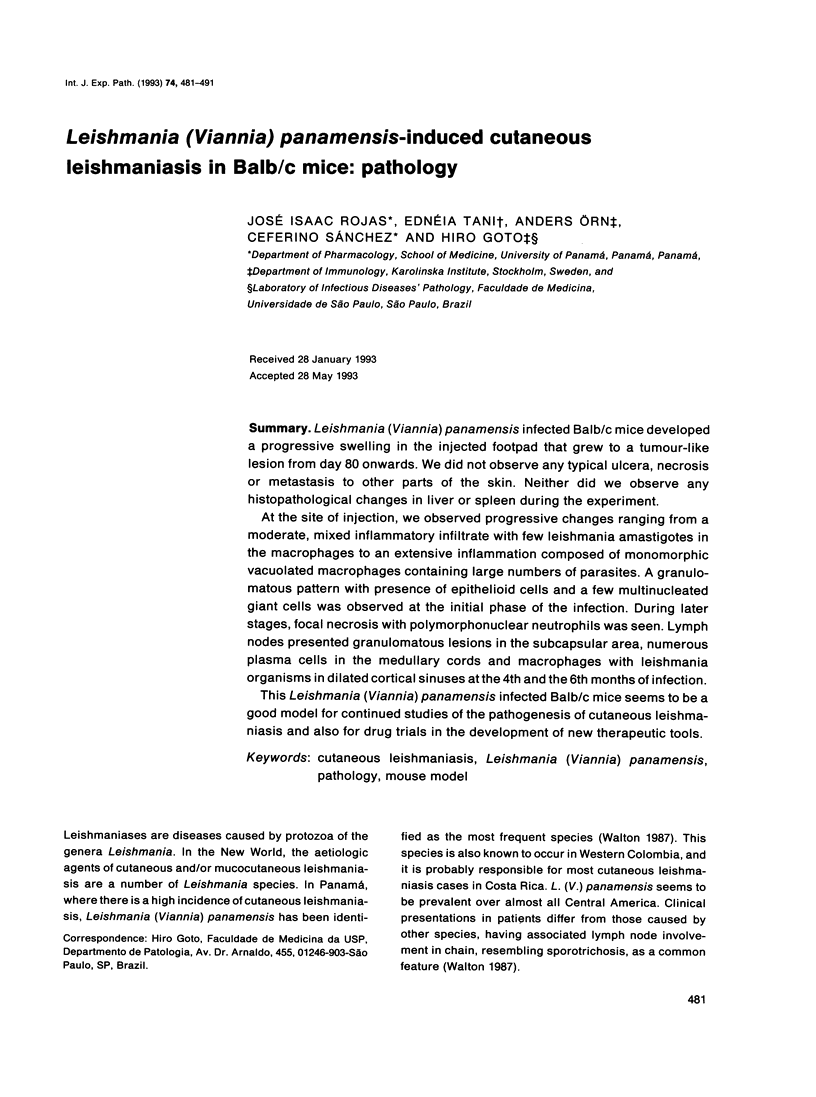
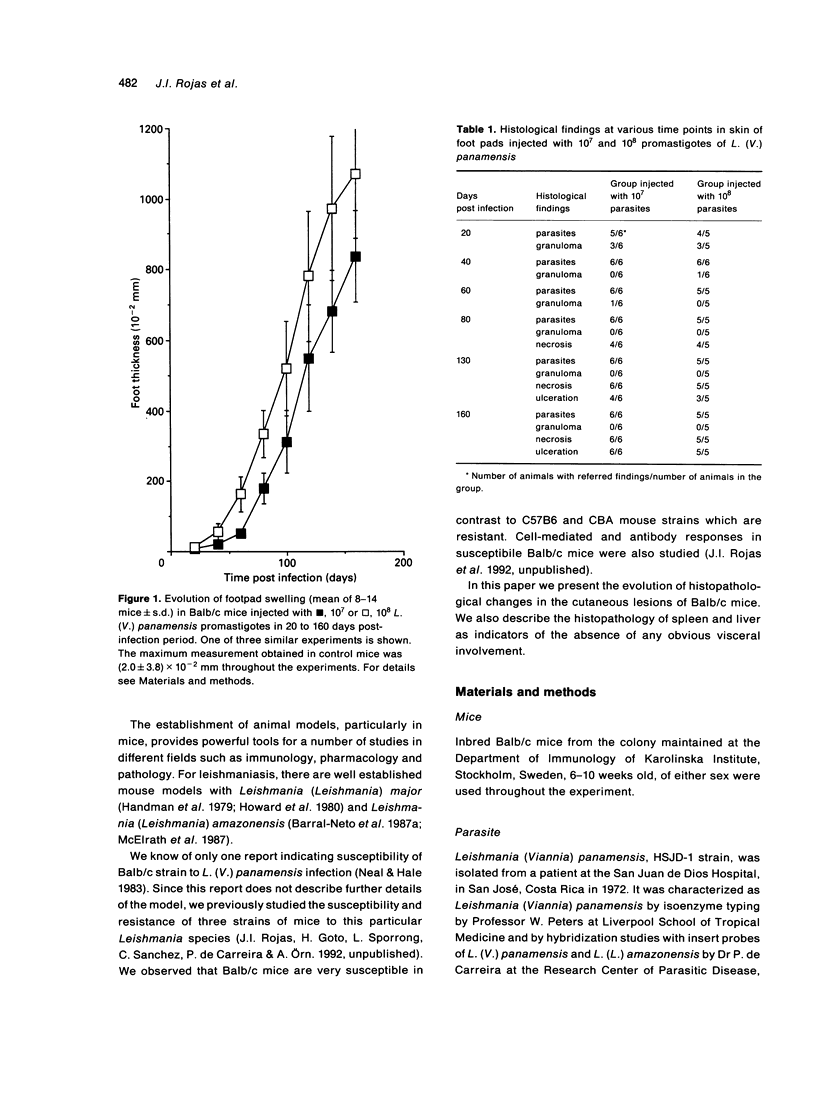
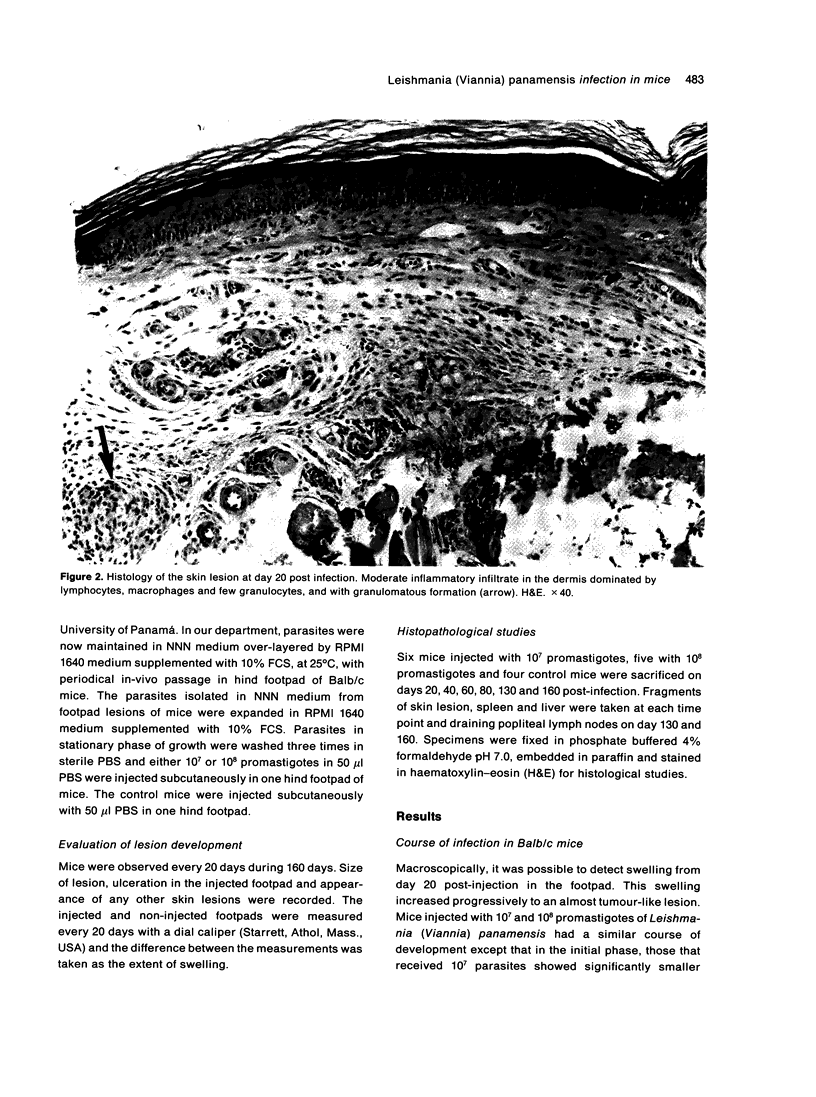
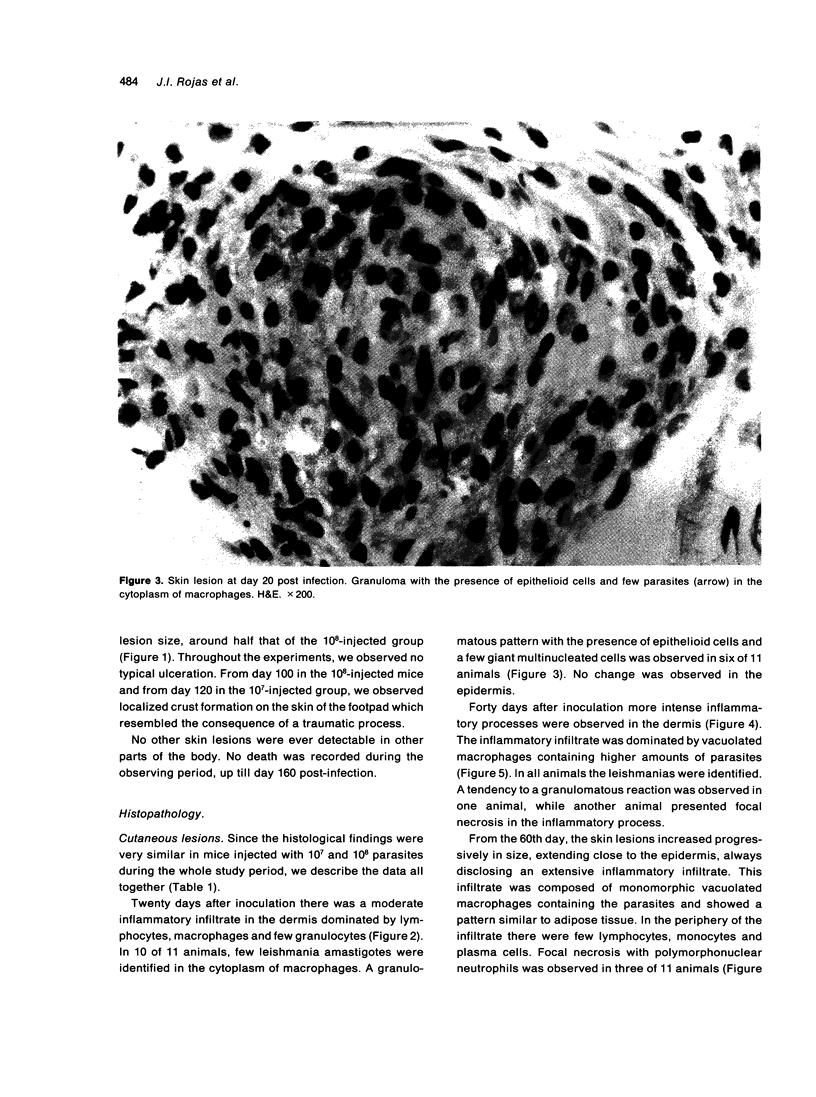
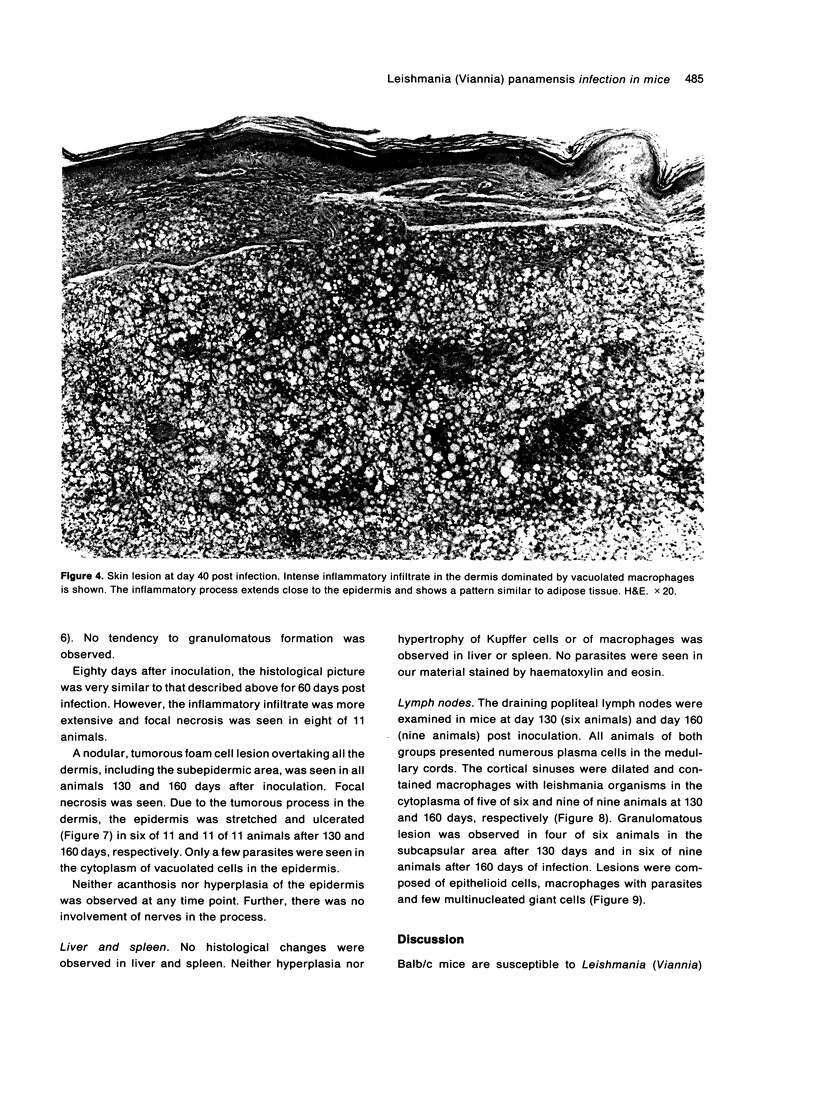
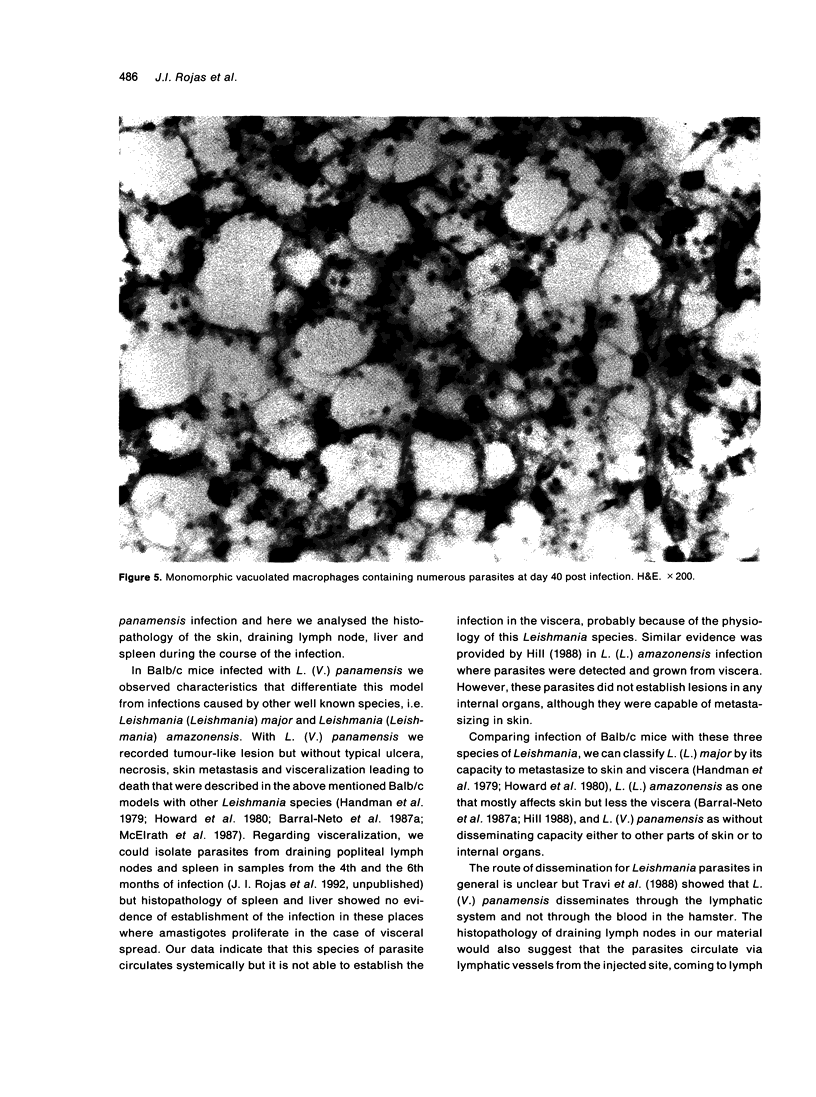
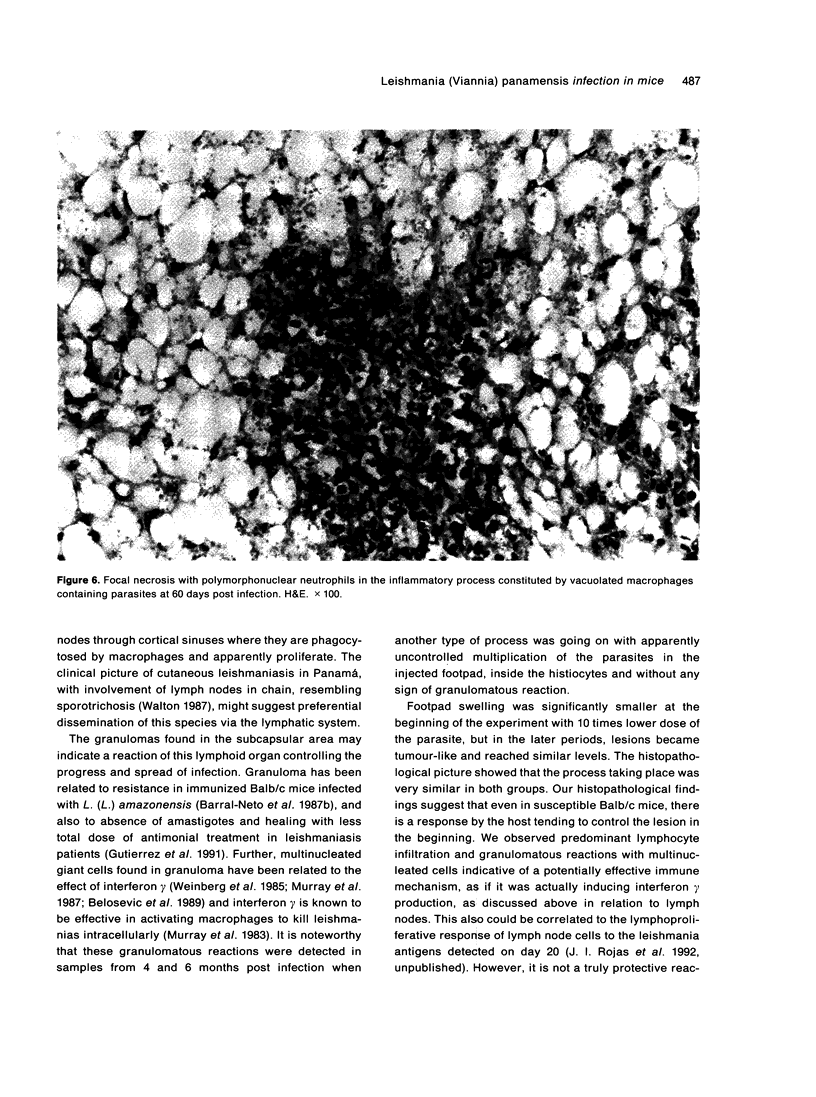
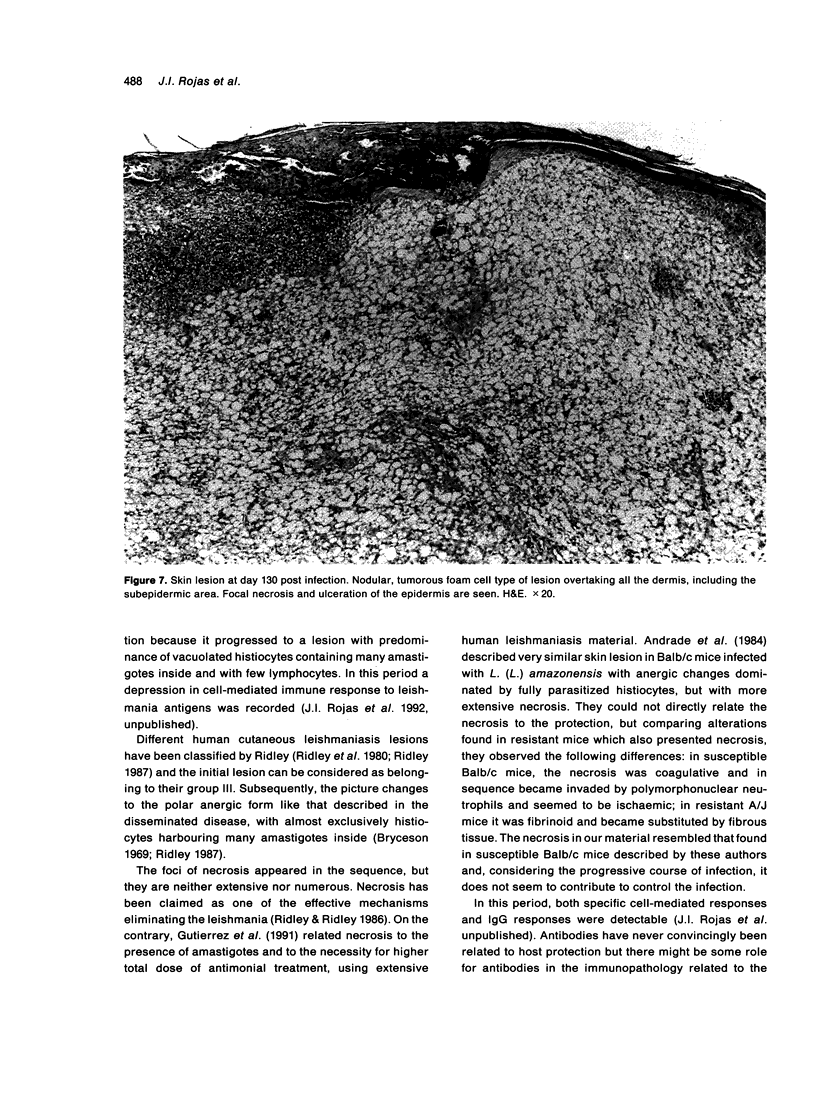
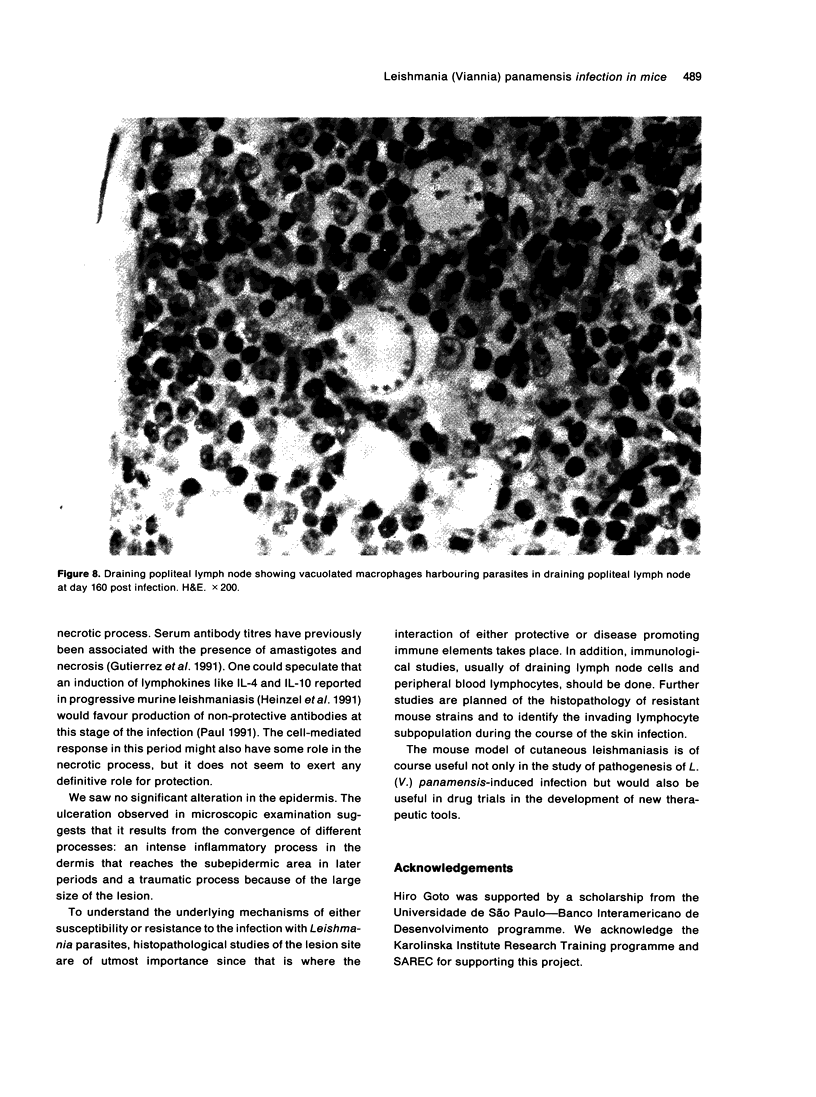
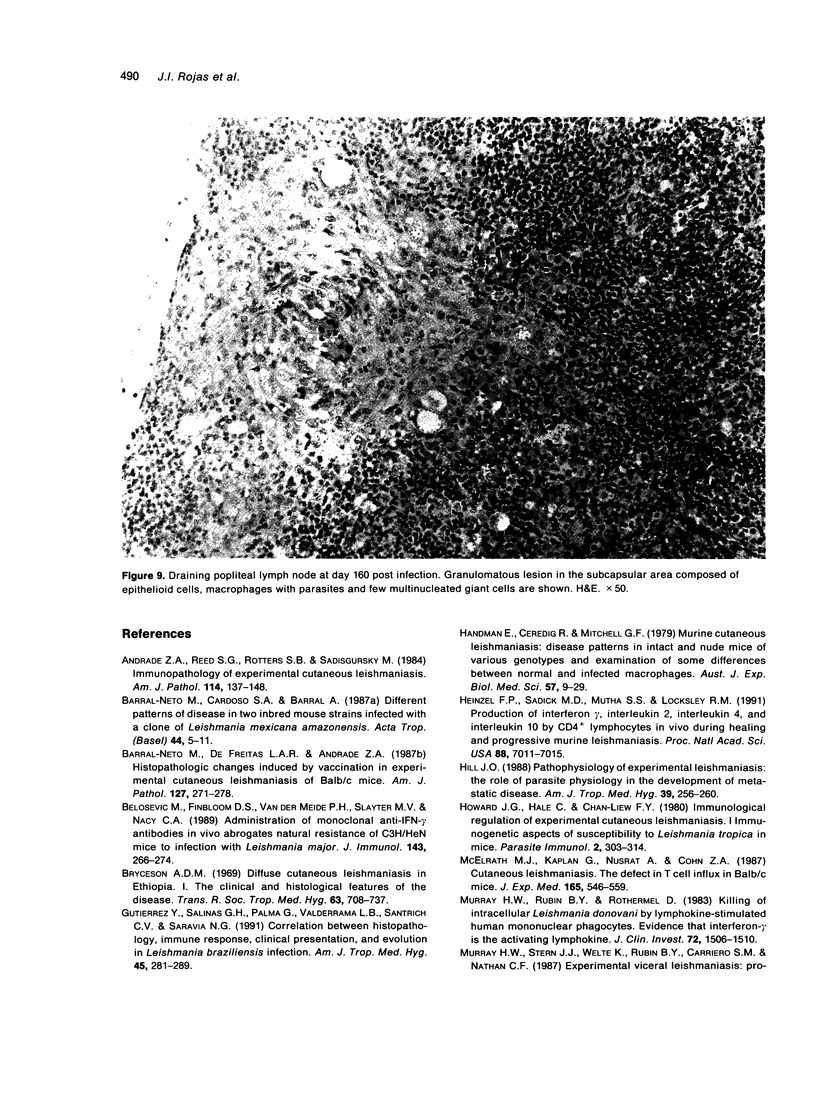
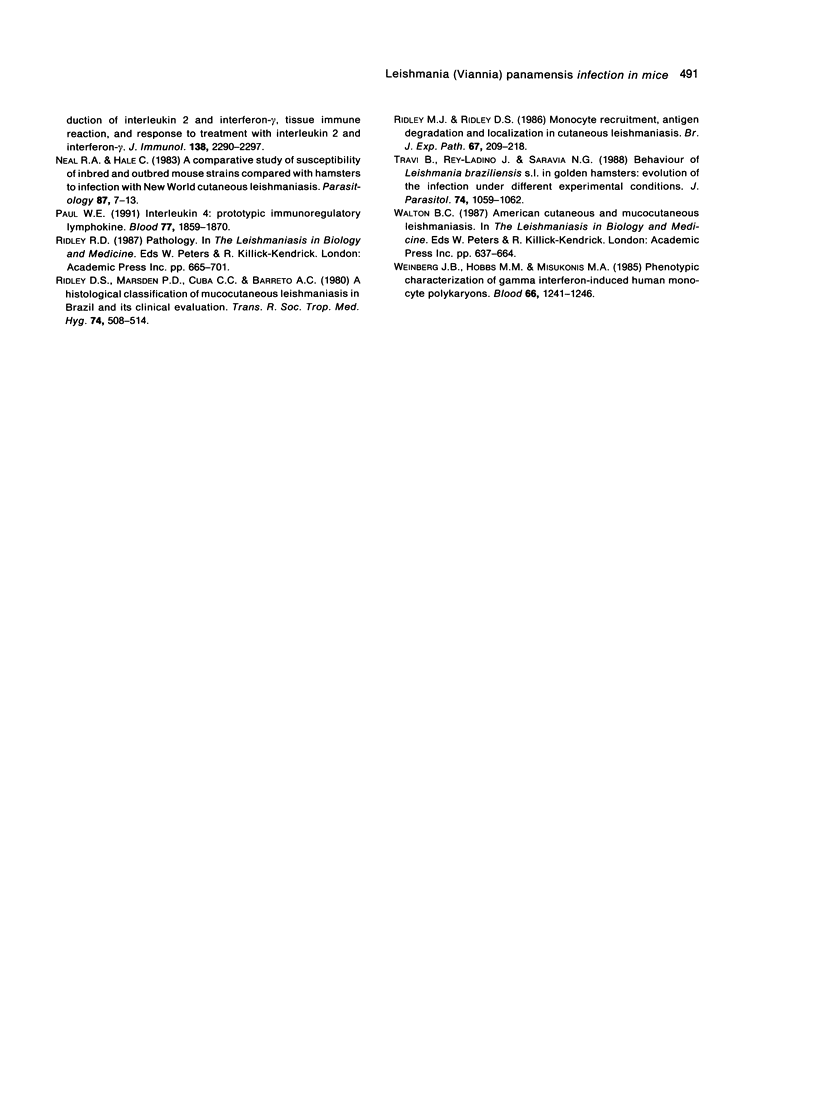
Images in this article
Selected References
These references are in PubMed. This may not be the complete list of references from this article.
- Andrade Z. A., Reed S. G., Roters S. B., Sadigursky M. Immunopathology of experimental cutaneous leishmaniasis. Am J Pathol. 1984 Jan;114(1):137–148. [PMC free article] [PubMed] [Google Scholar]
- Barral-Netto M., Cardoso S. A., Barral A. Different patterns of disease in two inbred mouse strains infected with a clone of Leishmania mexicana amazonensis. Acta Trop. 1987 Mar;44(1):5–11. [PubMed] [Google Scholar]
- Barral-Netto M., de Freitas L. A., Andrade Z. A. Histopathologic changes induced by vaccination in experimental cutaneous leishmaniasis of BALB/c mice. Am J Pathol. 1987 May;127(2):271–278. [PMC free article] [PubMed] [Google Scholar]
- Belosevic M., Finbloom D. S., Van Der Meide P. H., Slayter M. V., Nacy C. A. Administration of monoclonal anti-IFN-gamma antibodies in vivo abrogates natural resistance of C3H/HeN mice to infection with Leishmania major. J Immunol. 1989 Jul 1;143(1):266–274. [PubMed] [Google Scholar]
- Bryceson A. D. Diffuse cutaneous leishmaniasis in Ethiopia. I. The clinical and histological features of the disease. Trans R Soc Trop Med Hyg. 1969;63(6):708–737. doi: 10.1016/0035-9203(69)90116-3. [DOI] [PubMed] [Google Scholar]
- Gutierrez Y., Salinas G. H., Palma G., Valderrama L. B., Santrich C. V., Saravia N. G. Correlation between histopathology, immune response, clinical presentation, and evolution in Leishmania braziliensis infection. Am J Trop Med Hyg. 1991 Sep;45(3):281–289. doi: 10.4269/ajtmh.1991.45.281. [DOI] [PubMed] [Google Scholar]
- Handman E., Ceredig R., Mitchell G. F. Murine cutaneous leishmaniasis: disease patterns in intact and nude mice of various genotypes and examination of some differences between normal and infected macrophages. Aust J Exp Biol Med Sci. 1979 Feb;57(1):9–29. doi: 10.1038/icb.1979.2. [DOI] [PubMed] [Google Scholar]
- Heinzel F. P., Sadick M. D., Mutha S. S., Locksley R. M. Production of interferon gamma, interleukin 2, interleukin 4, and interleukin 10 by CD4+ lymphocytes in vivo during healing and progressive murine leishmaniasis. Proc Natl Acad Sci U S A. 1991 Aug 15;88(16):7011–7015. doi: 10.1073/pnas.88.16.7011. [DOI] [PMC free article] [PubMed] [Google Scholar]
- Hill J. O. Pathophysiology of experimental leishmaniasis: the role of parasite physiology in the development of metastatic disease. Am J Trop Med Hyg. 1988 Sep;39(3):256–260. doi: 10.4269/ajtmh.1988.39.256. [DOI] [PubMed] [Google Scholar]
- Howard J. G., Hale C., Chan-Liew W. L. Immunological regulation of experimental cutaneous leishmaniasis. 1. Immunogenetic aspects of susceptibility to Leishmania tropica in mice. Parasite Immunol. 1980 Winter;2(4):303–314. doi: 10.1111/j.1365-3024.1980.tb00061.x. [DOI] [PubMed] [Google Scholar]
- McElrath M. J., Kaplan G., Nusrat A., Cohn Z. A. Cutaneous leishmaniasis. The defect in T cell influx in BALB/c mice. J Exp Med. 1987 Feb 1;165(2):546–559. doi: 10.1084/jem.165.2.546. [DOI] [PMC free article] [PubMed] [Google Scholar]
- Murray H. W., Rubin B. Y., Rothermel C. D. Killing of intracellular Leishmania donovani by lymphokine-stimulated human mononuclear phagocytes. Evidence that interferon-gamma is the activating lymphokine. J Clin Invest. 1983 Oct;72(4):1506–1510. doi: 10.1172/JCI111107. [DOI] [PMC free article] [PubMed] [Google Scholar]
- Murray H. W., Stern J. J., Welte K., Rubin B. Y., Carriero S. M., Nathan C. F. Experimental visceral leishmaniasis: production of interleukin 2 and interferon-gamma, tissue immune reaction, and response to treatment with interleukin 2 and interferon-gamma. J Immunol. 1987 Apr 1;138(7):2290–2297. [PubMed] [Google Scholar]
- Neal R. A., Hale C. A comparative study of susceptibility of inbred and outbred mouse strains compared with hamsters to infection with New World cutaneous leishmaniases. Parasitology. 1983 Aug;87(Pt 1):7–13. doi: 10.1017/s0031182000052379. [DOI] [PubMed] [Google Scholar]
- Paul W. E. Interleukin-4: a prototypic immunoregulatory lymphokine. Blood. 1991 May 1;77(9):1859–1870. [PubMed] [Google Scholar]
- Ridley D. S., Marsden P. D., Cuba C. C., Barreto A. C. A histological classification of mucocutaneous leishmaniasis in Brazil and its clinical evaluation. Trans R Soc Trop Med Hyg. 1980;74(4):508–514. doi: 10.1016/0035-9203(80)90068-1. [DOI] [PubMed] [Google Scholar]
- Ridley M. J., Ridley D. S. Monocyte recruitment, antigen degradation and localization in cutaneous leishmaniasis. Br J Exp Pathol. 1986 Apr;67(2):209–218. [PMC free article] [PubMed] [Google Scholar]
- Travi B., Rey-Ladino J., Saravia N. G. Behavior of Leishmania braziliensis s.l. in golden hamsters: evolution of the infection under different experimental conditions. J Parasitol. 1988 Dec;74(6):1059–1062. [PubMed] [Google Scholar]
- Weinberg J. B., Hobbs M. M., Misukonis M. A. Phenotypic characterization of gamma interferon-induced human monocyte polykaryons. Blood. 1985 Dec;66(6):1241–1246. [PubMed] [Google Scholar]










